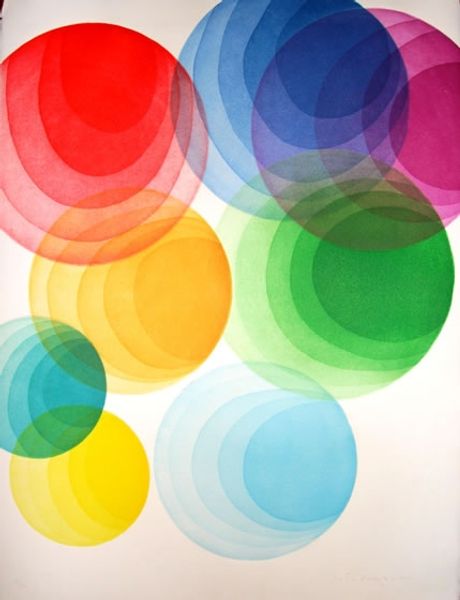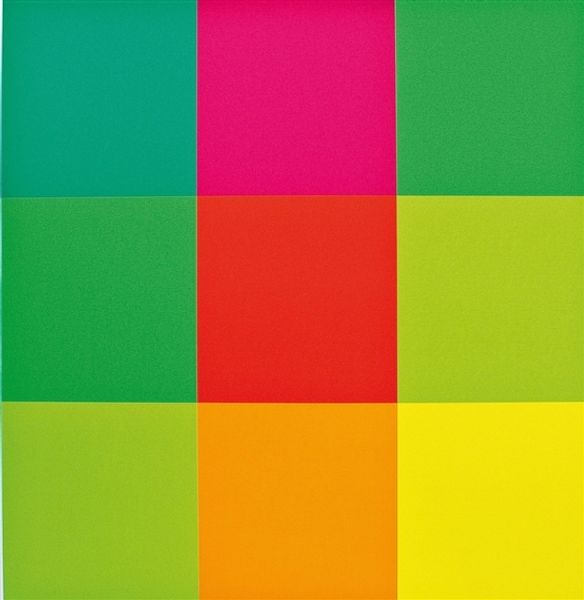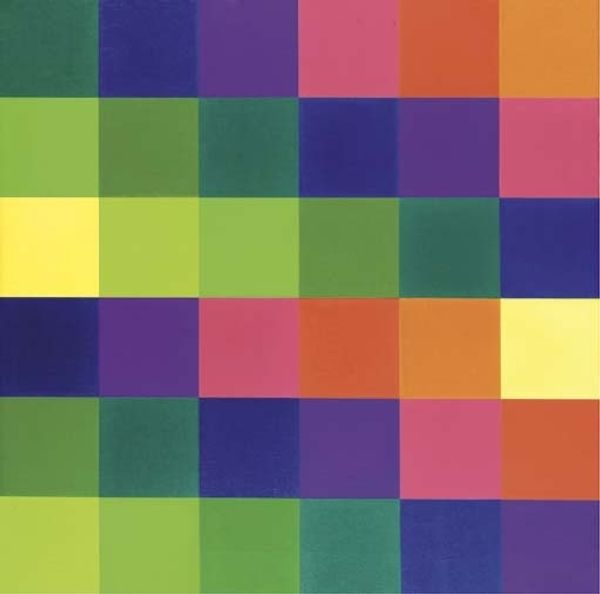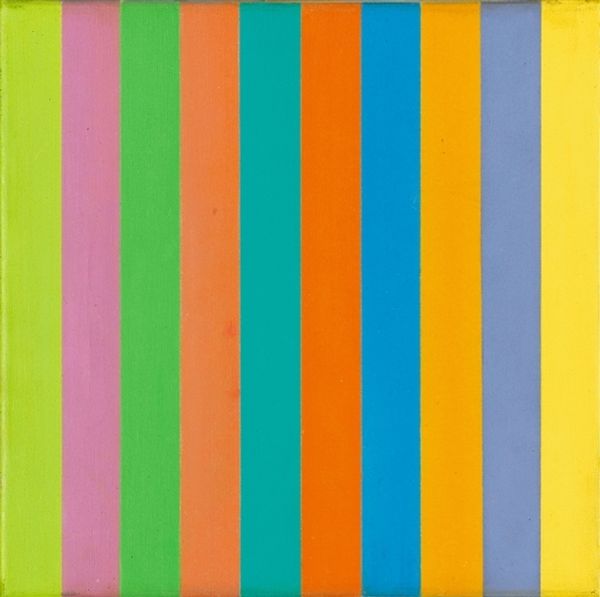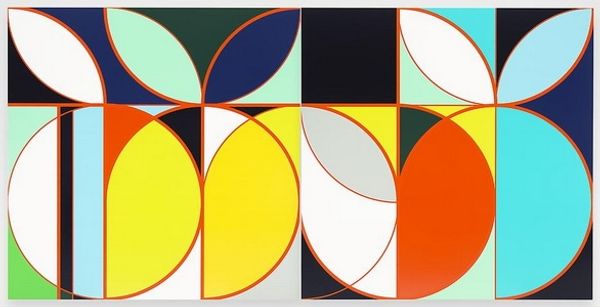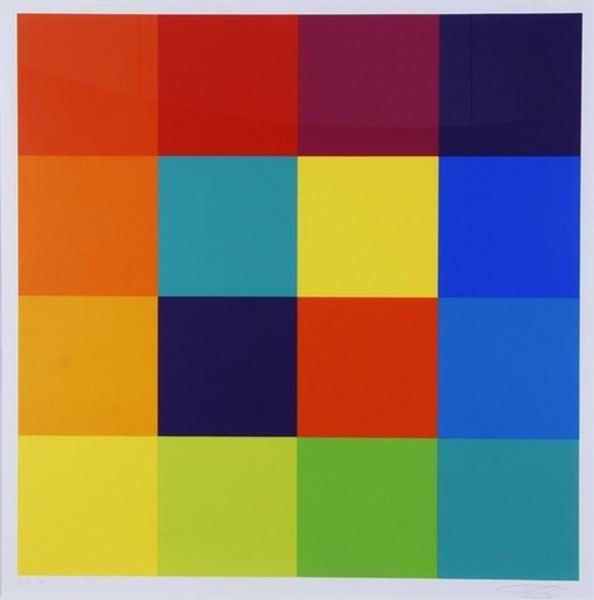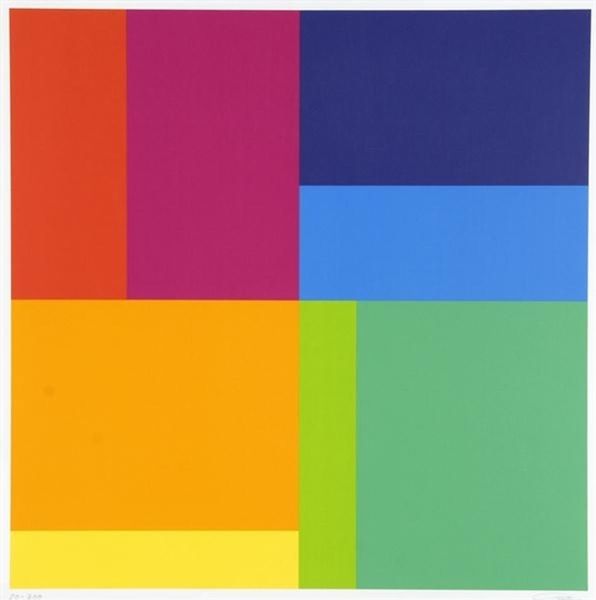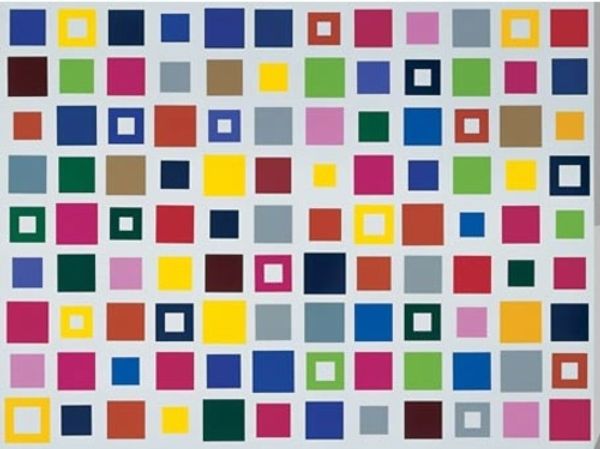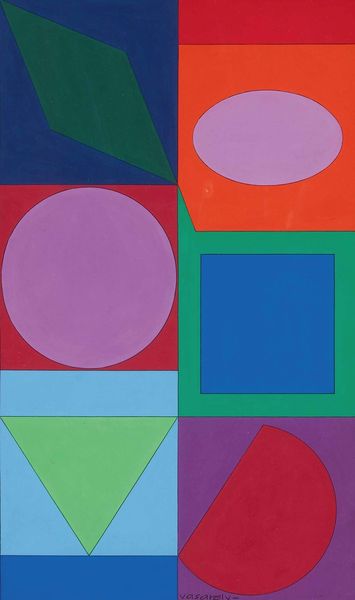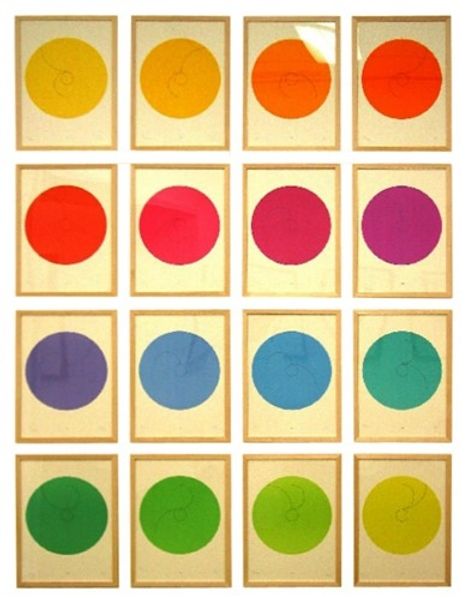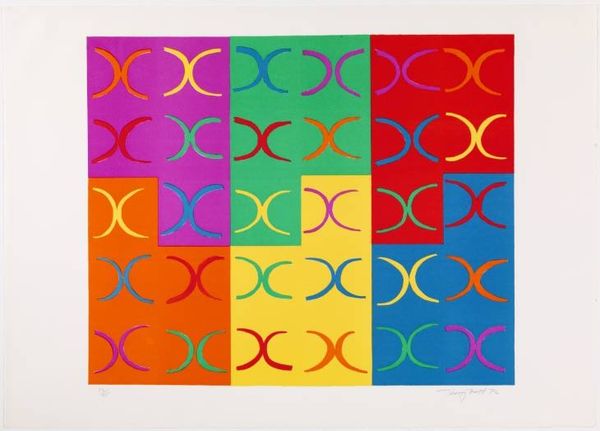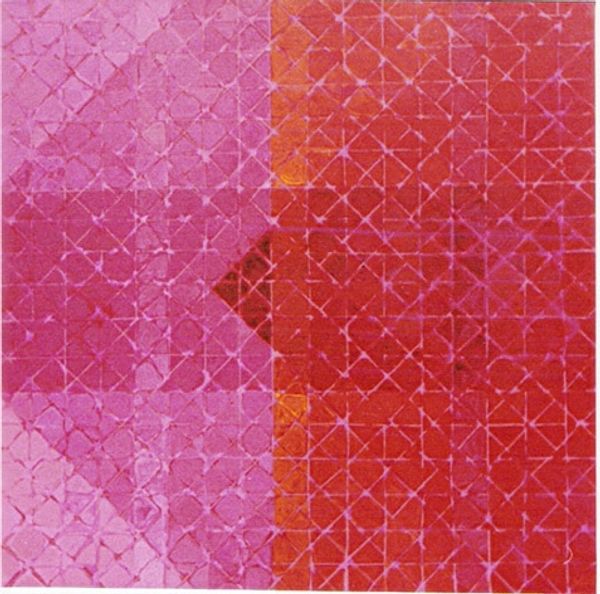
Copyright: Ian Davenport,Fair Use
Curator: Welcome. We’re looking at Ian Davenport's “Untitled Circle Painting: 12 multicoloured panels, no.1” from 2003, an acrylic on panel piece. What strikes you initially? Editor: An almost overwhelming sense of playfulness, yet constrained. The sheer chromatic intensity vibrates, but within such a rigid, almost grid-like structure, it feels deliberately restrained. What statements is it trying to make about accessibility? Curator: Indeed, the chromatic intensity! It certainly echoes the legacy of Color Field painting, doesn't it? Though it diverges significantly, there’s still an interest in exploring color as its primary subject. The twelve panels and their hues feel systematically organized. The linear framing of each disc contributes to a geometric arrangement in perfect chromatic unity. Editor: Systematically, yes, but doesn’t that very system highlight societal structures and controls? These vibrant colors, symbols of individuality perhaps, are boxed and framed by uniform circles. Where do we locate individuality within a system? Does accessibility really translate into equity when expression is contained within parameters that demand adherence to rules or geometric consistency? Curator: That tension between individual expression and structural constraints is crucial. But observe how each color within its boundary interacts. The surface quality is crucial; notice how the texture, particularly in areas where colors abut, emphasizes a kind of optical mixing. There are faint material boundaries—a conversation between each segment. Editor: The "conversation" you mentioned feels more like a series of monologues within carefully constructed cells. Perhaps this optical mixing alludes to cultural synthesis within an inherently unequal system, but that faintness does the hard work of minimizing conflict in an unequal matrix, doesn’t it? It’s a gentrification of social narratives, if I'm being provocative. Curator: An intriguing thought. The grid layout does suggest a systemic architecture. Ultimately, it balances an exploration of color theory, with minimalist composition that compels continuous questioning. Editor: Perhaps. But maybe Davenport is asking, if indirectly, how free our explorations of color – or identity – can ever be, inside the ever-present grids of societal expectations? Thank you, those bright, happy colours hide multitudes.
Comments
No comments
Be the first to comment and join the conversation on the ultimate creative platform.
